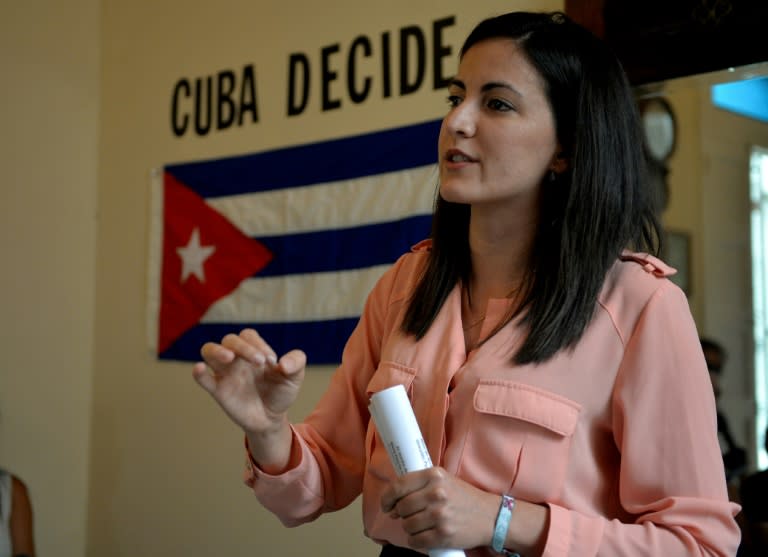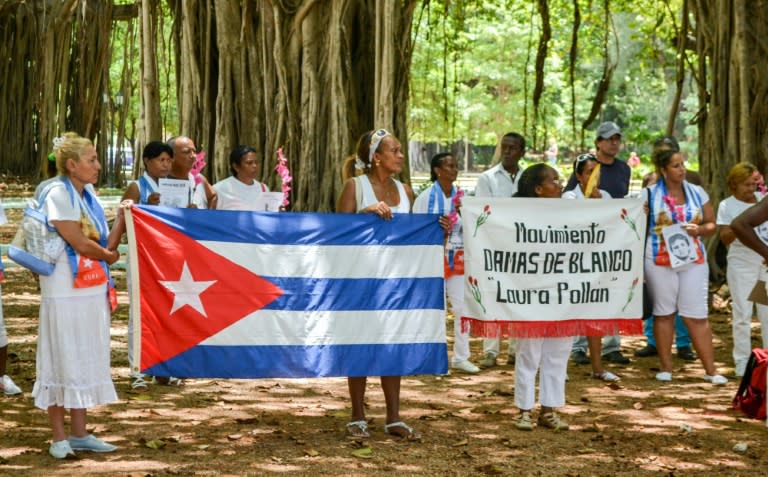Jaded Cuba dissidents eye fresh start with handover
On the eve of Cuba's historic presidential handover, Manuel Cuesta Morua is striving to find a new path for the island's outlawed and fractured opposition. Even though these dissidents don't have anything like the prominence they had two decades ago, they are still closely watched by the government. "It's about overcoming some of our weaknesses in opposition while at the same time realizing there is a political transition which we must try and make the most of so that it becomes a transition towards democracy," says Cuesta Morua. Now 55, he has spent almost half of his life as a so-called "dissident." Living with his mother in a modest apartment in Havana's eastern Alamar neighborhood, he is waiting expectantly for April 19, when Raul Castro, 86, will step down, likely handing power to his first vice-president Miguel Diaz-Canel, 57. After six decades of combative policies that have largely been unfruitful, now is time for a change. "The era of all-out rebellion against oppressive regimes is over. The Arab Spring has shown that these do not necessarily lead to democracy," he said. So the focus now is on institutional reforms -- a strategy for generating change "from within" espoused by Barack Obama, with whom Cuesta Morua met on two occasions. - Protest versus ballot box - Although the opposition has matured, it remains divided between those who back street protests and those wanting to effect change through legal means, Cuesta Morua says. For four decades, Cuba's Ladies in White have embraced the protest strategy -- but to little effect, with their weekly rallies routinely blocked by the police. "Total pressure, with no concessions: that is the way to topple Castroism," said Cuban political activist Antonio González-Rodiles, in a stance backed by other figures like Guillermo Farinas and Jose Daniel Ferrer. But then there are organizations like the Democratic Action Roundtable (MUAD), Otro18 (Another 2018) and Cuba Decides headed by Rosa María Payá, daughter of the late opposition leader Oswaldo Paya. "Nearly 70 percent of civil society agrees with taking part in a constitutional process -- not just by participating in elections but also by taking part in electoral reform ... to bring about the rule of law," says Cuesta Morua. A bold statement considering that in March, more than 85 percent of Cubans voted to ratify a new National Assembly under the same system that has been in place since 1976. And it is the 612-member Assembly that will on Thursday choose the all-powerful Council of State, which has 31 members, with the council's head automatically becoming president. - Obstacles without and within - But bringing about change is not an easy task. "The first external obstacle is government repression," says Cuesta Morua, explaining that the roundups common in Fidel Castro's era (1959-2006) had merely changed into shorter-term arrests under his brother. According to Cuba's illegal but tolerated Human Rights Commission, in 2017, the total number of political detainees stood at 5,155 -- the lowest number in six years. "The Cuban government has shown little tolerance for any expression of diverse political views, the independent organization of citizens and respect for individual civil liberties," says Jorge Duany, head of Florida International University's Cuban Research Institute. But there are also internal problems. "One obstacle we must overcome is intolerance," Cuesta Morua says, saying it applies as much to "external perspectives" as to differences based on race, gender and sexual orientation. - Depleted - Cuba's immigration reforms of 2013 -- which allowed people to travel abroad without a special exit visa for the first time in half a century -- allowed many opposition dissidents to come and go at will. Eliecer Avila, a young activist leader, emigrated with his family. And Paya lives on both sides of the Florida Straights. But this has only served to weaken the opposition, argues Martha Beatriz Roque, a veteran activist known as the "iron lady" of Cuban dissidents. From its visibility some two decades ago at the height of the economic crisis, the dissident movement has lost steam. It was further depleted by Obama's 2016 visit and his interest in promoting change in Cuba through "entrepreneurs" and other less-than-traditional groups, such as environmentalists and LGBT activists. But he was followed by Donald Trump, who buoyed the dissidents by toughening the US stance on Cuba. And in the US budget of 2018, there was no mention of the annual $20 million earmarked by the Obama administration to "promote democracy" in Cuba. - 'Not much resonance' - The opposition has also "not found the right way to reach the people," Roque admitted last year in remarks to the Miami-based Cuban American National Foundation. According to a 2009 diplomatic cable written by Jonathan Farrar, then head of the US interests section in Cuba which was released by Wikileaks, he saw "little evidence that the mainline dissident organizations have much resonance among ordinary Cubans." Their greatest effort, he wrote was "directed at obtaining enough resources to keep the principal organizers and their key supporters living from day-to-day." Since 1959, the United States has embraced anti-Castro organizations. And a good part of the dissidents admit to receiving financial help from anti-Castro groups in Miami. The Cuban authorities consider them to be mercenaries.





